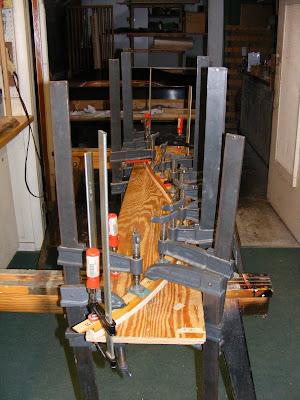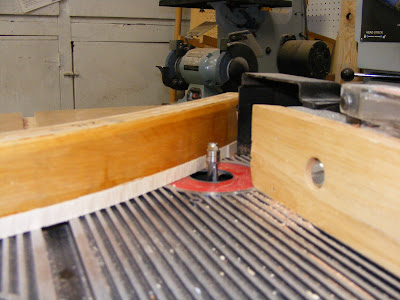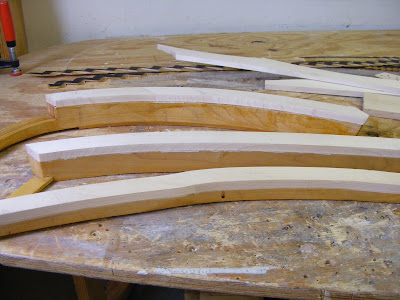

After the pinblock is fit to the plate, it must be located in the body of the piano to the proper location and height. I prefer to have my blocks fit tight on the sides and the front to the stretcher. This requires careful indexing and some trial and error. The plate must be returned to it's proper height and location side to side and back to back. Also the pinblock must lay flat on the shelf where it is mounted. When all these requirements are met, the block is dry fit with screws for the next step of setting the bearing.
































